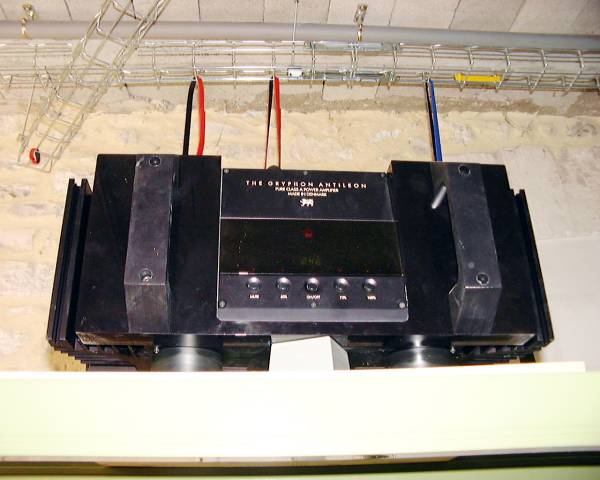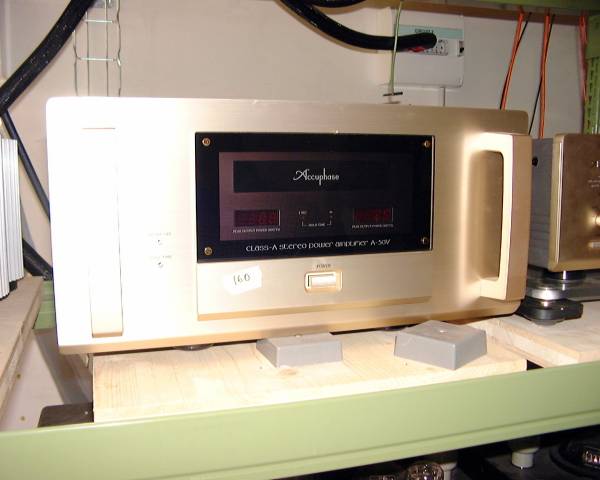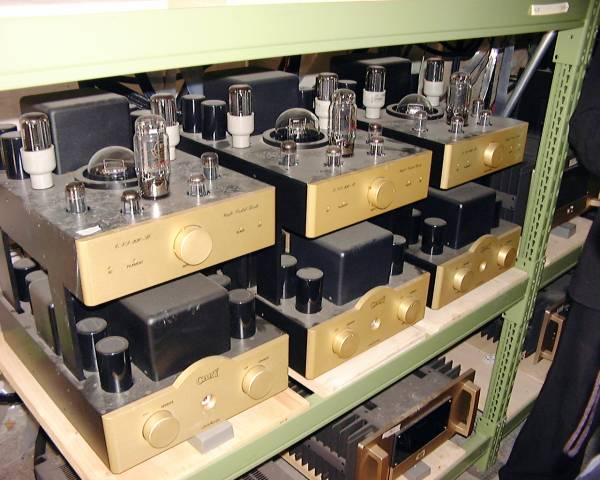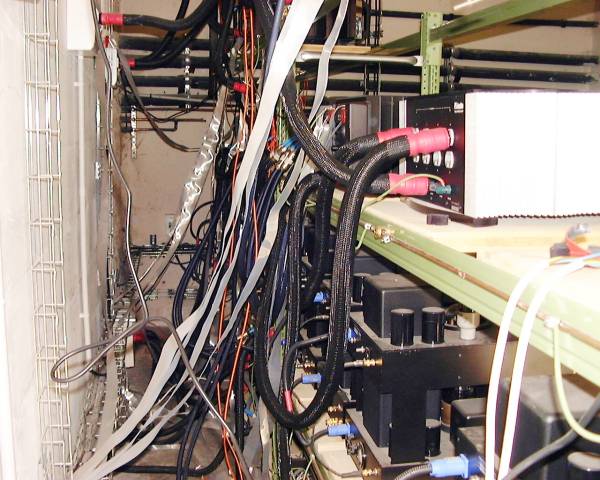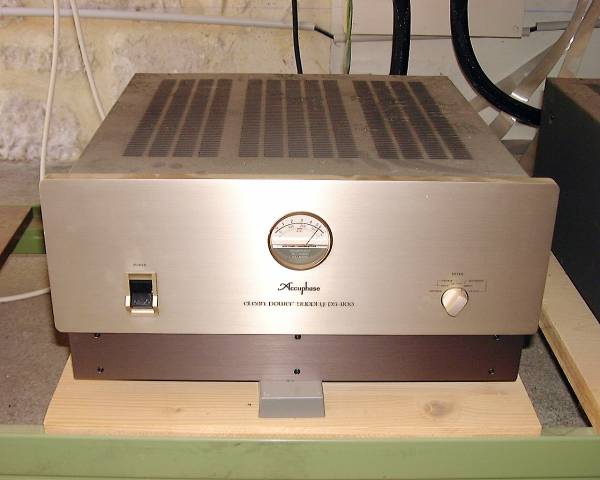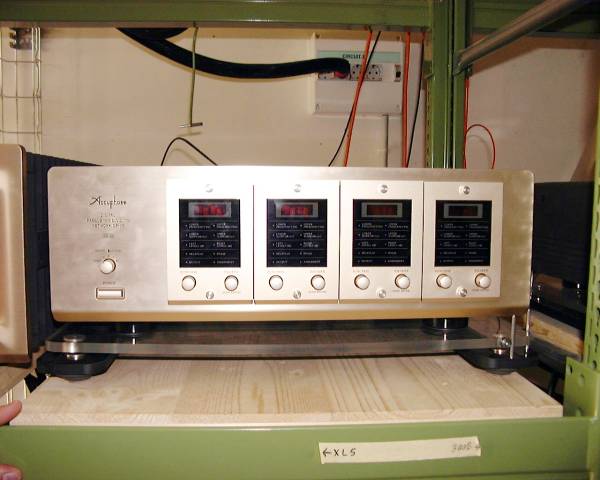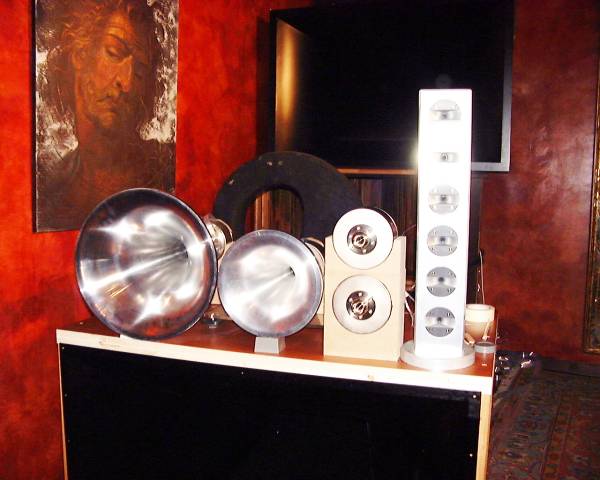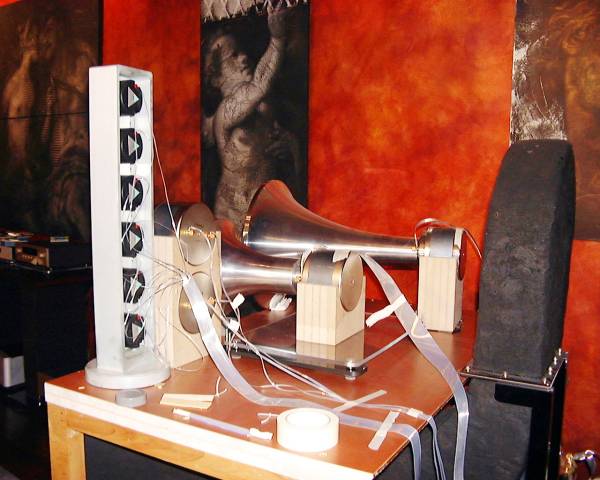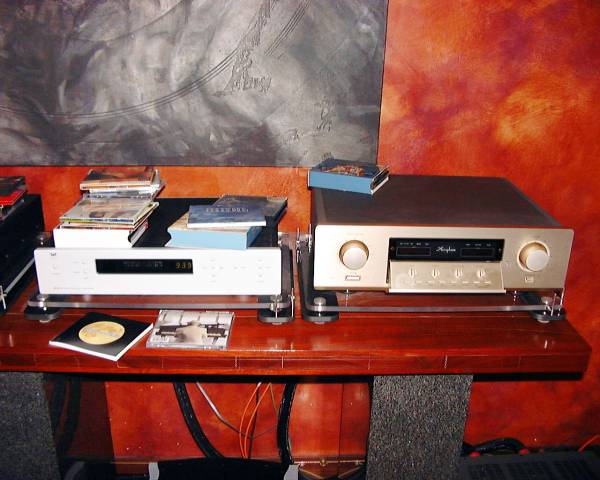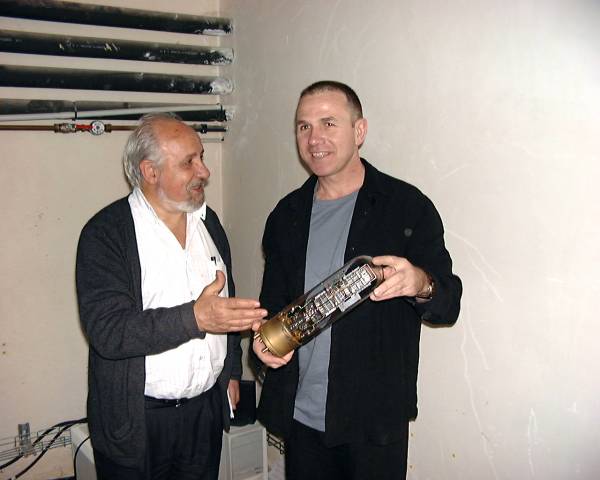
| [ J.Y. Kerbrat's active multiamplified system ] |
This is a system that doesn't need any explanation, because the images explains everything. On Saturday 20th, 2002 a group of spanish audiophiles from the egroup Simple Hi Fi traveled to the south of France to see and to listen this amazing system. It is a high-efficiency active multiamplification system (120 db of sensitivity. It sounds with only 0,1 watts) build by Mr. Jean Yves Kerbrat, a french audiophile. Due to the fact that in the Simple Hi Fi group the active multiamplification is a hot theme thanks to the work of Ramón Ribó, we contact Mr. Kerbrat in order to have an audition of his system. His answer was afirmative and so, we traveled to France to see the wonders of the system, the place and the kindness of Mr. Kerbrat.

As I said before I'm not going to write a long text explaining this system, because I think that it's better to look to the images. But as a little introduction I will say that this system is in continued evolution. So, it's probable that in a future it won't look like you see now. As every active multiamplification system, this instalation uses many amplifier feeding an audio signal to many speakers. Every speaker reproduces a part of the audio spectrum thanks to the work of an digital active frequency divider filter that sends a given part of the audio signal some of the speakers depending on the settings made by the user. In this instalation there're many amplifiers, but now Accuphase amplifiers (A-50V, class A 50 watts) are used. Before now, Gryphon Antileon and Cary CAD 1610 SE amplifiers were used. The digital filters are from Accuphase (Digital Frequency Dividing Network DF35). In addition to this equipment we can also find: battery power supply units (Accuphase), Burmeister CD player, DCS 972 DAC, Accuphase pramplifier. But the heart of the instalation is the Room Correction System by TACT Audio, the RCS 2.0. This machine corrects the acustical problems of any room adapting the response of the speakers after analyzing the sound they give in this environment. Once switched on, the RCS, by means of his microphone, records the system response (records the sound from the speakers) and usign his processors adapts that response to the room characteristics. All the measures made by the RCS are sent to a computer that, using a software developed by TACT, can be modified by the user. Also It stores many room configurations that could be used when needed. Another very important point of this installation are the speakers. As I said before they have 120db of sensitivity and with only 0,1 watts they can sound. They're very complex designs based on exponential horns and trumpet-like speakers, custom build and designed in Japan for this installation. They use amazing speakers motors for the horns and Pionner Exclusive Series tweeters, among others.
As you can imagine there aren't many systems like this one, and as I said before, it is amazing. What about the sound? Sometimes it reminds me the sound of the more conventional horns, based on Lowther speakers, due to its smooth response. With some records a lack of bass was present. Mr Kerbrat confirmed that with the current bass horns only a frequency of 30Hz could be reproduced. Rigth now he's waiting for a new horn to be made by a french company to down this response to subwoofers levels. In addition to that he told us that is the last few days he was reconfiguring the system and that he didn't have select the best option among all the stored. As you can see, working with this kind of equipment it's not easy, even with the help of the RCS 2.0. Finally, only say that this experience has been very interesting and that if you could try to build up an active multiamplified systems for a reasonable amount of money with excellent results.
Now, I will show you some images of that system. Again, it is really incredible. Thanks again to Mr. Jean Yves Kerbrat for his kindness.

